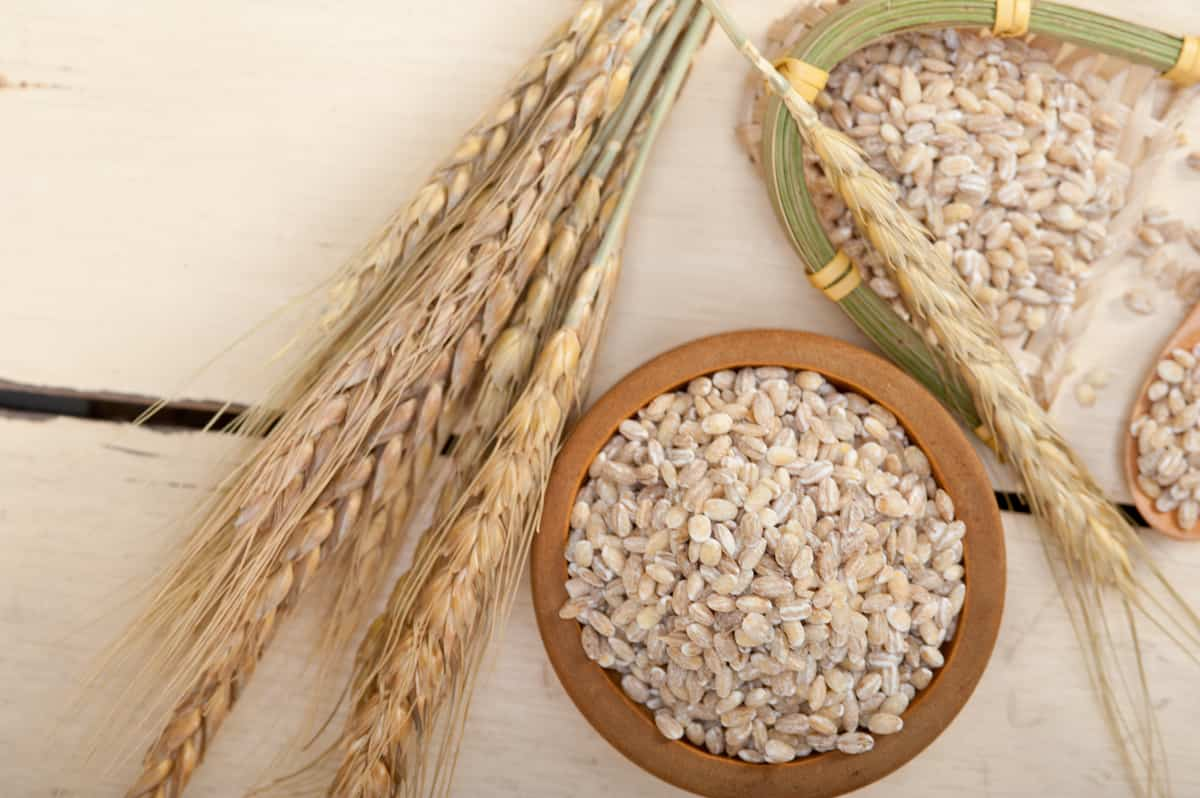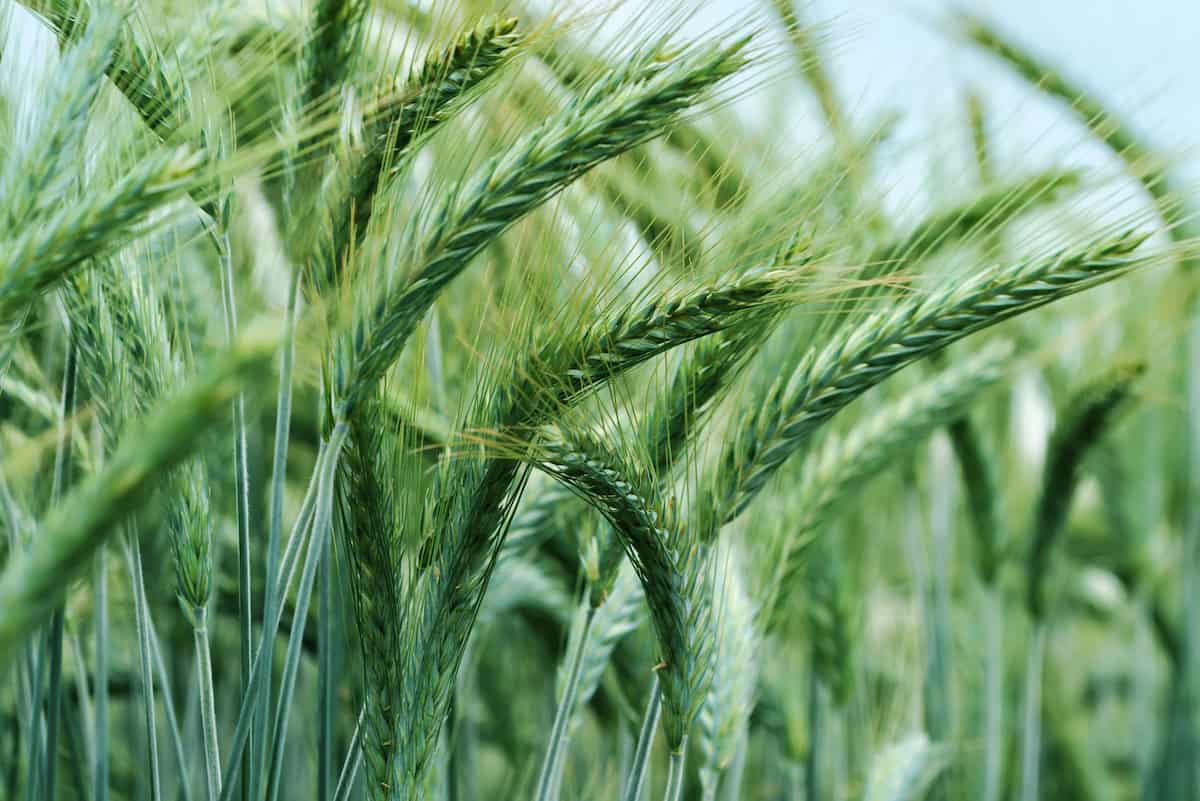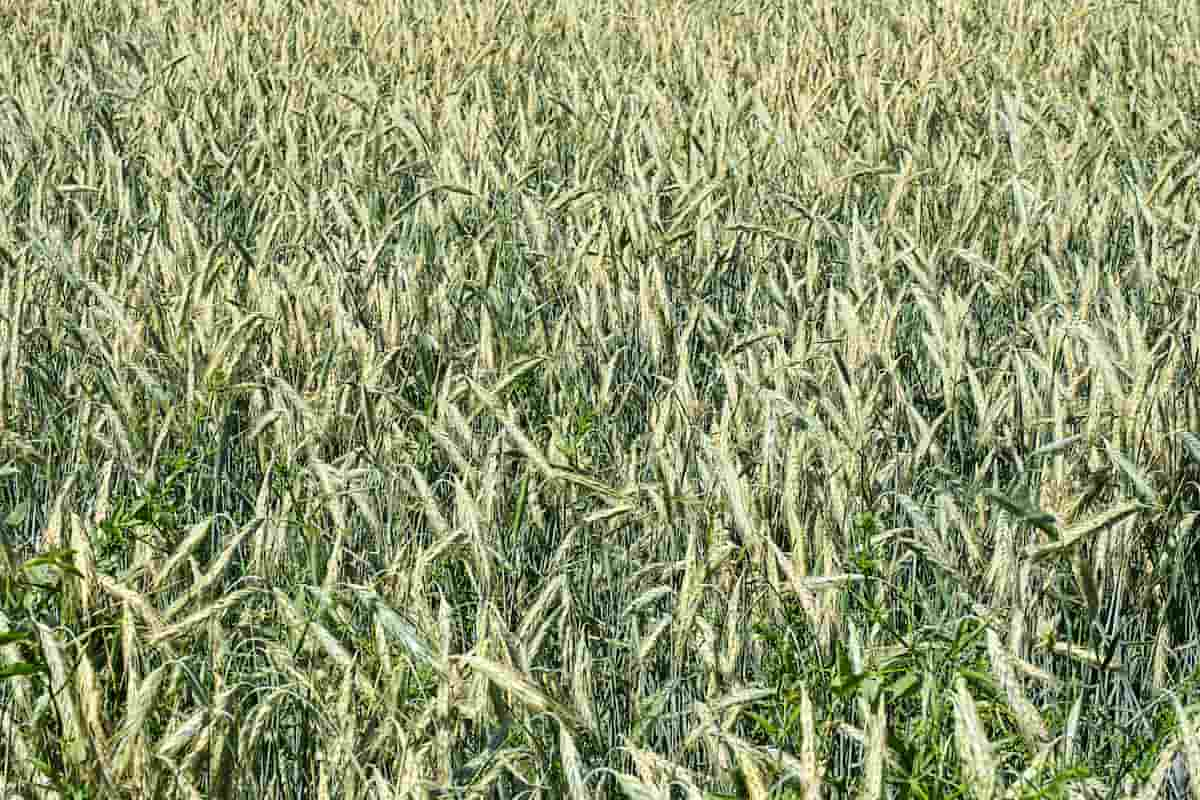Barley is a vital cereal crop, after rice, wheat, and maize, mostly grown in cooler and semi-arid regions worldwide. And it is also known as Poor Man’s Crop. Originating in the Middle East, it was first cultivated for human consumption but is now used for animal feed, malt products, and human food. Barley is a versatile rabi crop of the northern plains of India, with unique features as one of the earliest domesticated plants still playing a significant role in modern agriculture.

Barley Production Guide
Best Package and Practices of High Production Barley
Best practices for high barley production include selecting suitable varieties, timely sowing, optimum fertilization and irrigation, weed and pest management, and appropriate harvesting. Proper crop rotation, soil testing, and seed treatment are also essential. Use of certified seeds and adopting modern techniques like precision farming, use of bio-fertilizers, and integrated crop management practices
Land/ Field Preparation and Soil Requirements for Barley
Barley is primarily grown in sandy to moderately heavy loam soils. Soils with neutral to saline reactions and medium fertility are the most suitable for cultivation in the Indo-Gangetic plains. Barley can also be grown in saline, sodic, and lighter soils. However, acidic soils are not suitable as they impair root growth. Field preparation involves disc harrowing, cultivation, and planking. Land leveling and bunding are crucial for proper irrigation, as barley is sensitive to excess water and nitrogen. The optimum soil pH for barley cultivation is between 6 and 8.5.
Temperature, Climatic, and Rainfall Requirements for Barley
Barley is a versatile crop that can be grown as a summer or winter crop in tropical and subtropical climatic conditions. The growing period requires a temperature range of 12-15°C, while maturity needs 30-32°C. The crop is extremely vulnerable to frost, and any incidence during the flowering stage may lead to significant yield loss. Barley is drought-tolerant and can survive in high temperatures. It can be cultivated with 2-3 irrigations as an irrigated crop or under rainfed conditions.
Propagation Method and Seed Quality for Barley
Barley is propagated through seeds, which should be high quality, disease-free, and genetically pure. Certified seeds with high germination rates and good vigor are preferred.
Seed Treatment for Barley
To manage Loose Smut in barley, seeds should be treated with Bavistin or Vitavax at a rate of 2gm/kg seeds. Covered smut can be controlled with seed treatment using a 1:1 mixture of Thiram + Bavistin or Vitavax at a rate of 2.5 gm/kg. If termites are observed in fields, seed treatment with 150 ml Chloropyriphos (20EC) or 250 ml Formathion (25EC) in 5-liter water for 100 kg seeds is recommended to prevent losses due to termite attack.
Seed Rate and Spacing for Barley
For barley cultivation, the recommended seed rates are 35 kg/acre for irrigated conditions and 45 kg/acre for rainfed conditions. Row spacing should be 22.5cm for irrigated situations and 22.5 to 25 cm for rainfed situations. Seed depth should be 5cm for irrigated conditions and 6-8cm for rainfed conditions.
Sowing Method for Barley
The best techniques for sowing barley seeds are seed drilling or seed dropping. Farmers in India often use Chonga, attached to a desi plow, to drop seeds into the field.
In case you missed it: How to Grow Bitter Melon/Gourd in Greenhouse: A Step-by-Step Guide for Seed to Harvest

Crop Rotation and Intercropping in Barley
Barley can be rotated with sugarcane, sesame, and pigeon pea. At the same time, intercropping can be done in various ways, such as 1:1 and 2:1 barley-to-pea intercropping with alternating or two rows of barley for every row of peas, respectively. Alternatively, broadcasting pea seeds across the barley area can also be done for intercropping.
Manure & Fertilizer Applications in Barley
Barley requires Nitrogen (N), Phosphorus (P), and Potassium (K) for optimal growth, and it’s recommended to obtain the soil health card of the field for better nutrient management. Fertilizer requirements vary depending on factors such as sowing time, region, and type of barley. For example, for the timely sown irrigated crop, 60 kg/ha of N, 30 kg/ha of P, and 20kg/ha of K are required, while for rainfed crops in the plain region, 30 kg/ha of N, 20 kg/ha of P and 20 kg/ha of K are needed.
Weed Management and Herbicide Application in Barley
Barley is a fast-growing crop; weeds can be avoided with proper crop stand. Pinoxidin and Metsulfuron can be used 30-35 days after sowing for narrow and broad-leaf weeds. For both types of weeds, Isoproturan can be used. Pendimethalin can be used 1-3 days after sowing. 2,4-D is also effective against broad-leaf weeds.
Water Management in Barley
Barley can be grown under irrigated, limited irrigation, and rainfed conditions with specific varieties for each condition. Typically, the crop requires 2-3 irrigations, with the first one at 25-30 days after sowing, the second at 65-75 days after sowing when panicle emerges, and the third at 90-95 days after sowing during the grain formation stage.
Disease Control in Barley
Brown rust, stem rust, dwarf rust, and fusarium spike are fungal diseases affecting barley, reducing productivity and poor quality grains. Agrotechnical measures such as crop rotation, weed control, and using pathogen-tolerant varieties can help prevent these diseases. Chemical treatment with fungicides may also be necessary. For fusarium spike, measures include reducing plant debris on the soil surface and seed treatment before sowing.
Pest Control in Barley
Aphids, armyworms, and barley mealybugs are common insect pests that can damage barley crops. Aphids can cause yellow or white striped leaves, stunted growth, and secrete a sugary substance that promotes the growth of sooty mold on plants. Armyworms can consume entire leaves and notches on leaves and go through multiple generations yearly.
In case you missed it: How to Grow Malabar/Ceylon Spinach in Greenhouse: A Step-by-Step Guide for Seed to Harvest

Barley mealybugs can suck sap from leaves and stem, resulting in yellowing and browning, and produce a white cottony mass near the base of the stem. Control measures include natural enemies, insecticidal soaps or oils, and appropriate use of insecticides.
Harvesting and Threshing of Barley
Barley is usually harvested from the end of March to the first fortnight of April in different regions. To prevent shattering, which can cause breakage of the spikes, the crop should be harvested when it is mature. It should also be done carefully if harvested with combines to avoid grain breakage.
Barley Yield per Acre
The barley yield can range from 8 to 15 quintals per acre and is influenced by location, variety, artistic techniques, and weather conditions.
Conclusion
Barley cultivation requires proper planning, preparation of soil, appropriate variety selection, timely sowing, adequate irrigation, nutrient management, pest and disease control measures, and timely harvest to achieve maximum yield.
- Ultimate Guide to Ossabaw Island Hog: Breeding, Raising, Diet, and Care
- Ultimate Guide to Juliana Pig: Raising Facts, Size, Diet, Care, and Lifespan
- Raising Lleyn Sheep: Disadvantages, Price, Uses, Characteristics, and Care
- Ultimate Guide to Meishan Pig: Breed Facts, Breeding, Raising, and Care
- Ultimate Guide to Teacup Pigs: Raising, Diet, Lifespan, Cost, and Care
- Guide to Raising Poll Dorset Sheep: Facts, Profile, Characteristics, Uses, and Care
- Ultimate Guide to Bighorn Sheep: Characteristics, Diet, Lifespan, Breeding, and Lifecycle
- Ultimate Guide to Raising Katahdin Sheep: Farming Facts, Breed Profile, Uses, and Care
- Ultimate Guide to Raising Oreo Cows: Belted Galloways Farming Facts, Profile, Uses, and Care